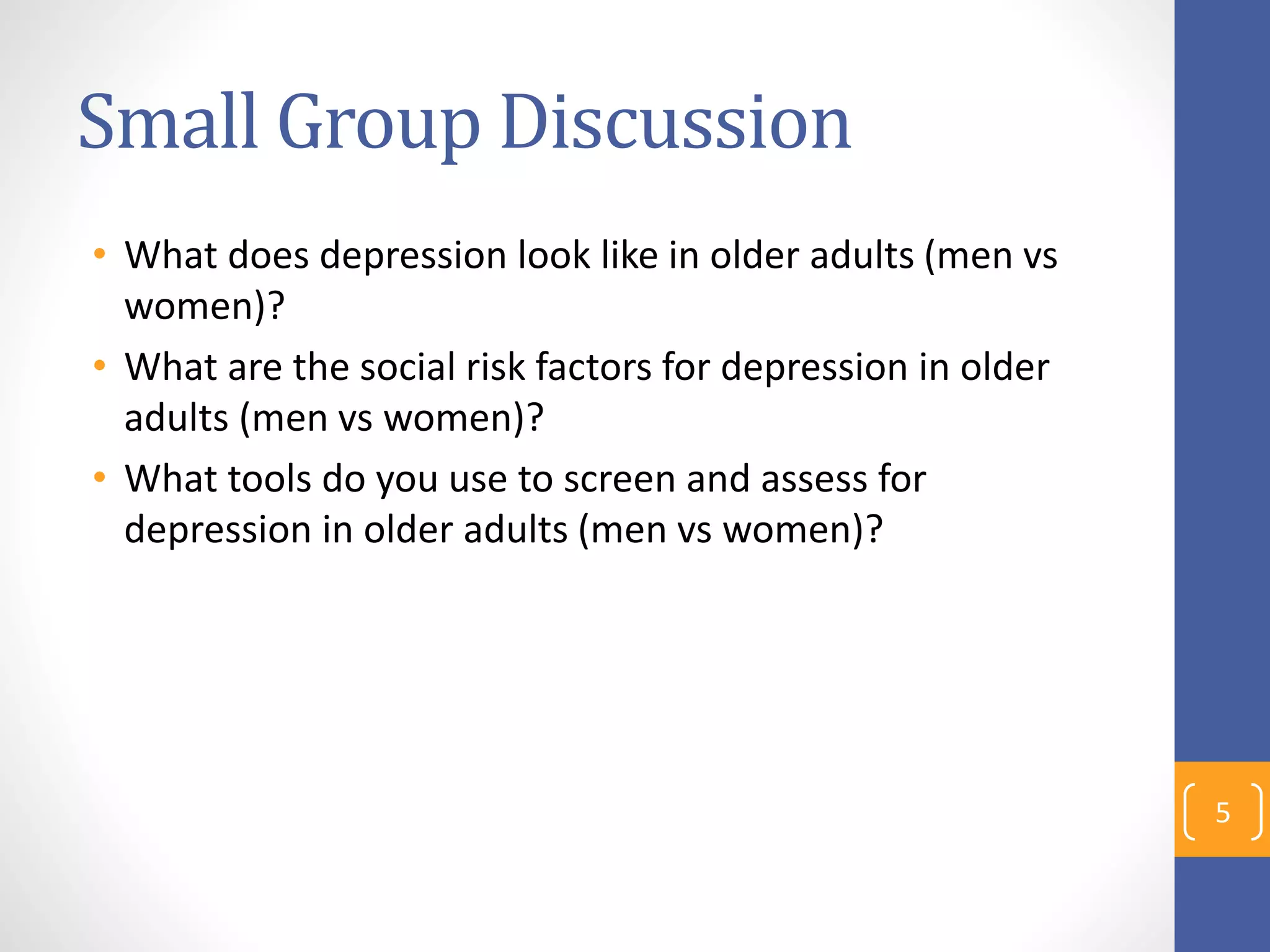This document discusses depression as a developmental crisis in aging. It provides statistics showing that major depressive disorder affects 1-4% of older adults aged 65+, while subsyndromal depression affects 10-15% of this population. Depression is more prevalent among older women. Common symptoms and risk factors for depression are described, including biological, psychological, and social factors. Tools for screening and assessing depression in older adults include the Geriatric Depression Scale, Mini International Neuropsychiatric Interview-Depression, and Center for Epidemiologic Studies Depression Scale. The significance for health professionals is that research, practice/teaching, and policy need to consider gender-specific causes and interventions for late-life depression.














